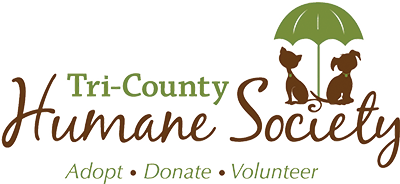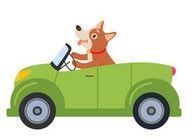Did you know that more pets are overweight than not? Multiple sources cite over 50% of American pets are overweight or obese, some as high as 58% of cats. While we may enjoy laughing at “chonky” pet memes online, there are unfortunately many health risks associated with overweight and obese pets. Overweight and obese pets are at higher risk for joint disease, metabolic diseases such as diabetes, urinary issues, and much more. Fortunately, there are ways to prevent and reduce problems associated with unhealthy weight gain.
First, it is important to recognize the markers of an ideal weight versus unhealthy weight. Pets at a healthy weight maintain good muscle form, have ribs that are easily felt but not visible, may have a subtle “hour-glass” shape when viewed from above, and have a subtle tuck at the abdomen when viewed from the side. Pets who lose their “hour-glass” shape or are wider at their abdomen than their chest, and whose ribs are covered in a thicker layer of body are crossing into unhealthy weight categories. A formal body condition assessment with your veterinarian is always recommended. Additionally, pet owners should learn to spot these subtle changes in body shape to address pet weight concerns sooner rather than later.
Maintaining a healthy weight is almost always easier than losing weight. Daily portion control, paying attention to calorie content of food, is vital. Many pets do great with a twice daily feeding schedule. If your pet is used to grazing their food throughout the day, only a certain volume should be daily. All pet foods should have daily feeding guidelines based on a pet’s size on the packaging as a guide. Although dry food is convenient, it is usually more calorie dense when compared to similar volumes of wet food preparations. Furthermore, wet food has many benefits including increased water intake, especially important in cats. A combination of wet and dry formulas may be beneficial.
Regular exercise is another important factor in maintaining a healthy weight in pets. Dogs should get plenty of exercise running, walking, and playing. Cat exercise can be more difficult, but there are creative ways to get them moving. Hiding toys, catnip, and low-calorie treats on cat towers or vertical perching spots is one option. Laser pointers and other interactive toys can also help get cats more exercise. Many food puzzles are available to encourage play and activity during meals.
Weight loss can be a tough process, but there are many supports available. Discuss a healthy weight program with your veterinarian and/or ask TCHS staff for more information. We can work together to keep pets healthy!








